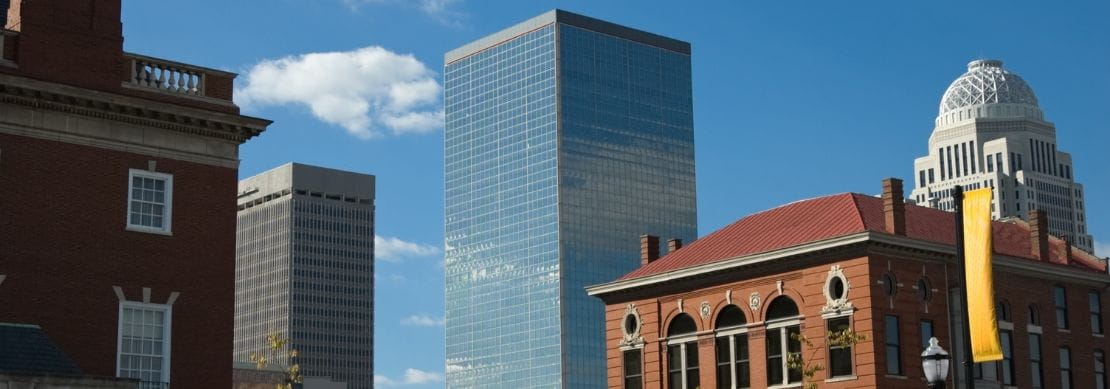See below exactly how much income you would need to earn in order to afford the principal, interest, taxes and insurance payments on a median-priced home in the 50 most populous metropolitan areas.
Key takeaways:
It's still too early to call, but the housing market may be coming to a turning point. There's nothing to suggest that there will be an imminent improvement in home affordability, or that any improvement will be considerable or substantial. Still, there appear to be some things that are changing for the better, at least from a homebuying perspective.
While we cover it in more detail later on, one of the key restrictions holding back the housing market in recent years seems to finally be passing. Namely, the number of homes available to buy has improved to the point where the "nothing available to buy" issue is fading into the rearview mirror. While the improvement is uneven -- inventory levels some markets remain quite tight -- the National Association of Realtors reported that number of homes for sale in June 2024 was 15.9% higher than in June 2024, and that there were 4.7 months of supply available at the sales pace that month. Of course, more homes on the market doesn't necessarily mean more desirable or suitable homes are becoming available (e.g. more trade-up or luxury homes in markets that need more starter inventory) so there will continue to be an inventory mismatch in many locations.
That said, additional supplies coming on line should help further temper home price increases. While home prices hit a new record high in June (and for the second quarter) those increases have throttled back appreciably this year, averaging just 1.8% over the three months ended June. For the same period a year ago, that increase was 4.9%, so home price increases have already cooled. Greater competition for a small current pool of potential homebuyers means that price depreciation is more likely to happen as sellers trim prices to get deals in place. This is particularly true now that sales activity is moving into its slower portion of the year, and we may see a broader or deeper seasonal decline in home prices over the next few quarters than is typical. More on home prices is below.
Mortgage rates are really no better than they have been, it's true, and the quarterly figures we used in our calculations are very near the middle of a range that's now held for about two years, as conforming 30-year FRMs have been no lower than 6.51% and no higher than 7.30% over that time. As interest rates are the key to getting the housing market into a higher gear, there are starting to be expectations that at least somewhat lower mortgage rates will be coming, provided any tariff-goosed inflation proves fleeting. Outside of a labor-market collapse or recession, there little reason to expect rates to plummet, but even a downward move toward the 6% level (as we saw last September) would be enough to provide a kick start to the housing market.
With their leveraging effect, lower mortgage rates are more important in the affordability calculation than are lower home prices. In this regard, they really didn't help much in the latest period, as they were nearly stable, declining by only 0.04% (conforming) and 0.03% (jumbo). As such, there was no mortgage-rate help for borrowers in the second quarter of 2025 compared to the first, although rates were a bit below where they were a year ago.
Failing any material improvement in mortgage rates, relative improvement has been coming along in the slow drip of income gains over time. If home prices flatten or ease, this happenstance will gradually align potential buyer incomes with the current housing climate. As such, the intersection of somewhat lower home prices, somewhat more homes available to buy, somewhat lower mortgage rates and somewhat higher incomes are enough to provide at least a modicum of optimism that the housing market will soon be picking up. How much is a matter of speculation, but seeing as to how sales last year were the lowest in the last 30 years, and (at least so far) this year's sales haven't improved on that, the bar to overcome for the market to show improvement is pretty low. The roughly 6% mortgage rates of last fall helped lift home existing home sales to a place nearly 10% above current levels.
In the current "national" calculation, buying a $429,400 median home price with a 20% down payment ($343,520 loan amount) using a 30-year mortgage with a rate of 6.79% requires an annual income of $114,169.11 to qualify once typical tax and insurance costs are included. Even if we adjust the Census Bureau's most recent 5-year running estimate of family income of $96,401 (per the American Community Survey, 2023) by 4% for 2024 and another 2% for the first half of 2025, this only lifts the income figure to a little over $102,000, still well short of the amount needed to qualify to buy that median-priced home (at least nationally, as if such a home existed).
Home Price Trends
The second quarter of each year is typically the peak for existing home prices, after which routine seasonality starts to kick in and prices retreat. This year's shaping up to be a little different; even as national prices set a new all-time record high during the period (June's $435,300, and a record $429,400 for the quarter) the uptrend for prices isn't happening evenly or even occurring across all markets.
In fact, on a quarter-to-quarter basis, there were four metro areas where home prices declined in the second quarter compared to the first: Phoenix, AZ, San Diego, CA, Richmond VA and Las Vegas, NV -- as diverse a group as you'll find. Quarter-to-quarter wobbles in value aren't uncommon, but what is uncommon is that these declines took place during a period when home prices most typically are rising to their annual peaks. In fact, there has actually only been one second quarter in the last nine years where any market showed a quarterly decline, and that was in the second quarter of 2020, when the pandemic shutdown began. At the time, Los Angeles was the lone outlier. Is the latest period an unusual quarter, or the start of a more broad-based decline in prices?
The more commonly referenced year-over-year comparison reveals a shift in the pattern, too. In the second quarter of 2025, fourteen of the top 50 metropolitan housing markets sported lower median prices this year than last; only 2Q23 had more (29) and no other second quarter in the last nine years had more than 3 markets with a price decline for this period of the year. A downturn in prices in the second quarter of this year isn't unheard of, but it is unusual in recent times.
Home prices typically start their seasonal declines in the third quarter of the year. Outside of the rebound effect in the third quarter of 2020 where no markets saw lower costs, the typical number of metros sporting quarter-to-quarter declines usually sees a quarter or more of metro housing markets with lower median sales prices. Rather soggy sales conditions this summer suggest a larger-than-average number will be seen this year.
Looking from the positive side of things, 90 percent of the top 50 metro housing markets did see price increases in the latest quarterly period, much to the delight of home sellers and the chagrin of home buyers. Worth noting, however, is that the median gain across all 50 metro areas was 5.84%; this may seem large, but is actually the smallest Q/Q increase in the second quarter in the last nine years.
Even for markets that are experiencing declines in home prices, the news isn't all that concerning. While they may be retreating from peak levels, softening home costs are only returning to previous highs and these would only cause a homeowner a loss if a) they bought near or at the peak prices of just a year or two ago, and b) need to sell the home already (possible, but somewhat unlikely given the short time horizon).
Salary Situation
Compared to the first quarter of 2025, relative home affordability improved in 7 of the top 50 housing markets (~14%) during the second quarter. More impressive was that 20 of the those 50 markets (40%) saw lower incomes needed to purchase a median-priced home when compared against the second quarter of last year. Mortgage rates were 21 basis points lower this year, improving purchasing power, and lower year-over-year median home prices in 14 of the top 50 housing markets helped, too.
Looking across a couple of markets where the income needed to buy rose and where it declined, a 4.39% higher income was needed in the Cleveland, OH metro areas (routinely one of the most affordable housing markets) but was 4.15% less in the Tampa-St. Petersburg-Clearwater, FL market. Overall, the 0.63% increase in the median income needed to buy a home across all 50 metro areas was the smallest 2Q to 2Q increase in five years.
As mortgage rates were virtually unchanged in the second quarter compared to the first (just 0.04% lower), the seasonal pickup in home prices damped affordability, at least on a national basis. Compared to the first quarter of 2025 (when prices are often at their seasonal nadir), the income needed to purchase a national median-priced was $5,728.31 more, about a 5.28% increase.
However, the affordability news was relatively improved when looking at the year over year comparison, as lower mortgage rates helped provide an offset to those record high prices -- the income needed to purchase a theoretical nationally-priced home was higher in the second quarter of 2025 than the second quarter of 2024 but by just $149.77 (an income of $114,169.11 this year compared to $114,019.34 last year).
Inventory Issues Improving
After years of ultra-lean inventories of homes available to buy, supply conditions have improved considerably. Slack sales and a somewhat greater willingness of homeowners to put their homes up for sale is starting to meaningfully change the inventory picture.
Inventory levels of homes available to buy are measured against the present rate at which they are selling, called an inventory-to-sales ratio. While useful, this measure can be misleading, since a fall off in demand -- such as might happen when mortgage rates suddenly or continually rise -- can bloat the figure upward even if no additional homes for sale come to market.
The National Association of Realtors reported that inventories in June were solid, coming in at 4.7 months of supply available at the present rate of sale during the final month of the quarter. This isn't an especially thin level, and is considerably improved compared to last June (4.1 months).
Reviewing conditions more broadly, the bigger picture suggests that the nothing-for-sale inventory issue that has plagued the existing home market for several years is fading. For the April-June period, inventory-to-sales ratios were 4.7 months, 4.6 months and 4.4 months -- the thickest that second quarter inventories have been since way back in 2016. Sales of homes during the period were a little slower this year than last, averaging 3.99 million (annualized) over during the second, down just slightly from the 4.05 million average pace a year ago, so there improvement isn't solely a mathematical one.
It is said that the "lock-in effect" -- homeowners unwilling to sell and trade a low-rate mortgage for a higher one -- is a key factor in why there are still so few existing homes for sale. While that is likely true, it's also true that home prices are also significantly higher now then they were over the last couple of years, and there's a reasonable likelihood that many wanna-be sellers would have difficulty qualifying for today's more expensive homes even if mortgage rates were measurably lower. Even being able to make a large downpayment on a next home might not be enough to even keep the amount being financed the same, let alone lower, so for at least some potential sellers there is no offset to (or relief from) the higher mortgage rates in the market today compared to a few years ago.
As well, even if they can meet the challenge presented by higher rates and higher home costs than they currently have, sellers also face the same little-desirable-to-buy situation that buyers without homes face, although this is lessening. Even so, some must wait until conditions in their markets become better balanced for their needs. It's not quite a chicken-or-the-egg situation, but a combination of smaller step-up in mortgage payment (either lower rates or prices, or a combination of both) or more suitable or viable homes to buy at present prices is going to be needed over time to restore a more properly functioning existing housing market.
At least one saving grace for some sellers is that they may be able to explore avenues that have fewer barriers and better actual availability of homes for sale. For example, a seller looking to buy new construction doesn't face the limited inventory issue that continues to bedevil potential buyers of existing homes in some markets. As well, prices of new construction are highly competitive and in many cases lower than are prices for existing homes, and many builders are also offering price concessions and even financing assistance. Folks who can relocate away from crowded coastal real estate markets may find better value opportunities in new construction in inland areas.
How much house will your income and debt-load support? You can run your own calculations with HSH.com's How Much House Can I Afford to Buy? calculator.
Downpayment Difficulties
Potential homebuyers chasing today's markets know the problem all too well. Rising home prices mean greater amounts of savings are needed to achieve even a small downpayment. Our calculations use a 20% down payment as a base, since this eliminates the complication of factoring for the costs of Private Mortgage Insurance, where premiums are dictated by the borrower's credit strength, size of the borrower's downpayment and choice of mortgage type and term.
Want to buy the first quarter's national median-pried home with a 20% down payment? You'll need to have amassed $85,880 in savings -- and this leaves out the need to accumulate funds for mortgage closing costs and any required reserves. Even for a highly diligent saver this amount will likely take years to amass, and by then, higher home prices may likely necessitate an even larger amount.
The national median home price hit a record this quarter and while it is 6.79% higher this quarter than last, it's only 1.73% higher than the same period a year ago. As such, while the downpayment size to reach 20% of the median price is up quite a bit (+$5,640) compared the first quarter, but a somewhat more manageable $1,460 more this year than last. However, even a diligent saver would have had to come up with an additional $28.08 per week on top of other savings just to keep pace with the annual increase.
At the risk of being discouraging, if someone could save $1,000 per month, it would take them more than seven full years just to reach today's 20% downpayment level; saving at twice that rate would make it about three and a half years... but in either case, the downpayment goal line will surely have moved, again as home prices tend to rise with inflation over time.
Even someone looking to get in with a minimal 3% downpayment -- available on Fannie Mae's HomeReady and Freddie Mac's Home Possible programs (and 3.5% down for FHA-backed loans) would need $12,882 and $15,029 respectively. This would shorten the savings timeframe, but a smaller downpayment on that same median-priced home means both a larger loan amount and incurring mortgage insurance costs -- so a higher income is actually required to qualify.
If you're thinking of going with one of these low-downpayment options, you'll want to see how these choices will work over time by using HSH's Low Downpayment Mortgage Comparison Calculator. You'll be able to see the costs of non-cancelable FHA mortgage insurance against the cancelable PMI costs of Fannie and Freddie offerings over any time horizon you desire. We take into account risk-based loan-level pricing adjustments, too.
Potential homebuyers of more modest means looking to buy homes often struggle to come up with even a minimum downpayment and closing costs, especially in heated markets. Help making the jump to homeownership is often available but can be tricky to find if you don't know where to look. To help would-be homebuyers, HSH offers its database of Homebuyer Assistance Programs by state, where information about these valuable programs, vital website addresses, contact info and more can be found.























































